Month 1:16, Week 3:1 (Rishon/Pesach), Year Day 016
2Exodus 11/40
Gregorian Calendar: Monday 25 March 2024
Passover Season 2024 II
Chag haMatzah II, Yom haBikkurim
The Resurrection That Sets You Free
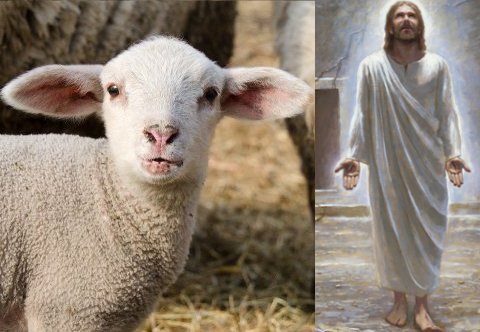
Continued from Part 3
PREFACE
Introduction
Chag Yom haBikkurim Sameach kol beit Yisra'el and Mishpachah and welcome to this the third day of the Passover Season, the second day of Chag haMatzah or the Feast of Unleavened Bread and to the third of the spring and annual moedim or appointments of our Heavenly Father, Yom haBikkurim or the Day of Firstfruits, otherwise known as Resurrection Day, for this is the day that our Master Yah'shua the Messiah (Jesus Christ) was raised from the dead and stands forever at the right hand side of Yahweh-Elohim, our Almighty Father-God of heaven and earth. Today we proclaim loudly and joyfully with all other Christians and Messianics who share the same conviction of mind and heart:
"HE IS RISEN!"
At Pesach (Passover) we commemorated His death but today we celebrate His arising and conquest of death itself for all mankind.
 Christ is risen!
Christ is risen!
When This Work Began
On 28 June 1984 (27 June if you calculate from midnight to midnight) Yahweh called this work into existence. A couple of days ago two of the brethren and I were reminiscing about all that had happened since we were called to serve in this spiritual family, sharing some of the incredible things that had happened, the miracles shown to us by the Father and the numerous ways we had been blessed by Him, and we marvelled. When I received the calling on 28 June 1984 I hadn't the faintest idea how things would turn out or exactly what we would be called to build and were I to go back to that day in my small home in north Oxford, England, knowing what I know now, I am not sure I would have believed my own account. Nothing ever turns out the way we anticipate. And yet, were I to trace the spiritual foundation of what we stand for, and preach and bear witness of still, I would take you back to my very first sermon preached in public on 14 April 1985, in Summertown in north Oxford, where I was a guest speaker at the local Saints' Church which met in the Old Bakehouse. That sermon was entitled, RESURRECTION SETS US FREE - sets us free from the terror that death would have had for us had we no hope of life beyond death, it sets us free from the hopelessness and purposelessness that atheism promises, and sets us free from worrying about the detrimental things that each day might bring us. We don't have to worry any more once our hope is set on Christ because we have the promise of being raised to life once again on this earth in immortal bodies like the one our Saviour presented Himself in to His astonished talmidim (dsiciples) when He appeared to them out of nowhere in a locked room.
The Future Various Religions Offer Us
As you look at the sequence of truths that the three spring festivals teach us, namely:
- 1. The reality and ugliness of death that none of us can ever escape - it's the one thing we can be 100 per cent certain of (other than the fact we will all be taxed by our goverment) - that's Pesach or Passover;
- 2. The necessity of living a life based on righteousness and free of sin - that's Chag haMatzah or the Feast of Unleavened Bread; and
- 3. The hope of immortality beyond the mortality of this world - that's Yom haBikkurim or the Day of Firstfruits,
you realise just how cardinal a doctrine the resurrection actually is. No other religion offers us such certainty, no other religion offers us a continuing life back here on earth in physical bodies doing the things that give us such pleasure and satisfaction doing things which we would wish to enjoy forever. The other major religions offer only a continuing existence as perpetually disembodied spirits such as in Islam where the men (but not the women) are offered an endless orgy with chained virgins, or in Hinduism and Buddhism threatening to send us back in reincarnation as mortals again and again in an endless cycle of suffering until finally we supposedly we earn enough goof karma points to attain to 'enlightenment' at which point we enter a state of Nirvana in which we all become absorbed into a single pesonality-free mass or sea of consciousness - disembodied and stripped of all self, passions and physicality. And finally there are the satanists and devil-worshippers who offer an endless party of drinking, carousing and torturing Christians, and the atheists who offer total extinction, a ceasing of existence altogether. That's basically the menu man is offered but only one dish is true, the others total fabrications.
The Perfect Physical-Spiritual Blend
The core teaching of the Good News or Gospel is a perfect blend of the spiritual and physical. We're essentially going to be like what we are now but infinitely better as well as free of death, pain and suffering. Like stainless steel that cannot rust, unlike regular iron that does, so mankind's future is to be one of perfect spirituality and physicality all merged into one immortal whole. There are choices to be made, of course to attain that blissful state - lives to be lived that determine just what kind of metaphorical 'steel' we are to become, based on our faith or lack thereof, and the deeds we elect to do while we are here.
The Evidence Presented
So today, some 40 years on, I am going to share with you a slightly expanded version of the original message I gave when I was a young 30 year-old minister, in which I present some of the most important evidence for the resurrection which we are celebrating today. My prayer is that this will either strengthen your existing faith or give you some solid ground on which to build a new or renewed faith - a stepping stone to a new life in Christ for this is foundational truth. Either way, I hope you will leave here this afternoon with a new-found confidence and hope.
PART 1
Re-introducing the Turin Shroud
I wonder how many of you are familiar with the Turin Shroud? Many Christians have hailed this as evidence for the resurrection of Messiah. I began intially believing this, then grew sceptical for a time, and then began to accept it again as more and more scientific evidence accumulated. Forty researchers have taken a highly sophisticated look at this ancient linen relic. Their conclusions have given credence to those who believe the shroud is the resurrection-imprinted burial cloth of Messiah.
A Photographic Negative Burned into Cloth
The Shroud has long been in possession of the Roman Catholic Church and appears to be the burial cloth of someone who was crucified. It carries the imprint of a man with bloodstains in the area of his wrists and feet, slash marks on his back, and wounds on his forehead. Not only does the evidence suggest a crucifixion, but it also points to something that has defied natural explanation. The fact that the image remains in the cloth in the form of a photographic negative has led some to attribute it to a sudden burst of resurrection energy. [1][2]
 The face of on the Turin shroud - is this a 1st
The face of on the Turin shroud - is this a 1st
century x-ray photograph of the actual Messiah?
Evidence for a Sceptical Generation
Personally, I would like to believe it was Yah'shua's (Jesus') burial garment. I have been impressed by the evidence, which includes computer-enhanced images of a person under the cloth. I have also wondered at times whether the Master may have given our sceptical generation this kind of physical evidence just to show us that people who don't believe the New Testament won't believe anything - even the kind of physical evidence they say they need.
Persistent Unbelief
If the evidence continues to stand up, which is definitely seems to have done since 40 years ago when I first preached on this topic, and if it continues to be ignored by most unbelievers, the Shroud of Turin might well be an illustration of what Yah'shua (Jesus) taught about persistent unbelief. He told a story which suggested that if the Jews of His day didn't believe Moses and the nevi'im (prophets) (whom there was good reason to believe), they wouldn't even believe if someone were to return from the dead (Lk.16:31). In other words, those who don't want to believe adequate evidence will find a way to reject any evidence.
Adequate Evidence
In any case, whether or not the shroud is legitimate, is not that critical to the Christian faith. Even if it were authentic, it would only give additional support for evidence is that is already adequate. It is much more important that we understand the evidence that the Bible itself offers. For that reason, I would like to spend a little time considering the evidence for Yah'shua's (Jesus') resurrection listed by the apostle Paul in the 15th chapter of his first letter to the Corinthians:
"I passed on to you what I received, which is of the greatest importance; that Messiah died for our sins, as written in the Scriptures; that He was buried and that He was raised to life three days later, as written in the Scriptures; that He appeared to Peter and then to all twelve apostles. Then He appeared to more than 500 of His followers at once, most of whom are still alive, although some have died. Then He appeared to James, and afterwards to all the apostles. Last of all He apeared also to me - even though I am like someone whose birth was at the wrong time" (1 Cor.15:3-8, TEV).
According to Scripture
I would like you to note that Paul twice emphasises that the death and resurrection of Messiah were "according to the Scriptures".
Fulfilment of Old Testament Prophecy
Here Paul was referring to the Tanakh or Old Testament prophetic scripture rather than to the New Testament, which was still being compiled. He was saying that the life, death, and resurrection of Yah'shua (Jesus) fulfilled what the Old Testament prophecies predicted about the coming Messiah. It is an illustration of the 'Cinderella Principle': a good fit is evidence of the match. In Cinderella's case, it was a pretty princess and a glass slipper. In this case, it is the New Testament fulfilment that fits Old Testament prophecies. Let's run through some of them so that you can see with your own eyes that I am not making this up:
| Prophecies | |
Fulfilment |
| Gen.3:15 |
Would be the offspring of a woman |
Gal.4:4 (Lk.2:7; Rev.12:5) |
| Gen.18:18 (Gen.12:3) |
Promised offspring of Abraham |
Ac.3:25 (Mt.1:1; Lk.3:34) |
| Gen.17:19 |
Promised offspring of Isaac |
Mt.1:2 (Lk.3:34) |
| Num.24:17 (Gen.28:14) |
Promised offspring of Jacob |
Lk.3:34 (Mt.1:2) |
| Gen.49:10 |
Will descend from the Tribe of Judah |
Lk.3:33 (Mt.1:2-3) |
| Isa.9:7 (11:1-5; 2 Sam.7:13) |
The heir to the throne of David |
Mt.1:1 (Mt.1:6) |
| Mic.5:2 |
Place of birth: Bethlehem Ephrathah |
Mt.2:1 (Lk.2:4-7) |
| Dan.9:25 |
Time of birth |
Lk.2:1-2 (Lk.2:3-7) |
| Isa.7:14 |
Born of a virgin |
Mt.1:18 (Lk.1:26-35) |
| Jer.31:15 |
Slaughter of infants |
Mt.2:16 (Mt.2:17-18) |
| Hos.11:1 |
Escape into Egypt |
Mt.2:14 |
| Isa.9:1-2 |
Ministry in Galilee |
Mt.4:12-16 |
| Deut.18:15 |
As a prophet |
Jn.6:14 (Jn.1:45; Ac.3:19-26) |
| Ps.110:4 |
As a Priest, like Melchizedek |
Heb.6:20 (Heb.5:5-6; 7:15-17) |
| Isa.53:3 (Ps.2:2) |
His rejection by Jews |
Jn.1:11 (Jn.5:43; Lk.4:29; 17:25; 23:18) |
| Isa.11:2 (Ps.45:7; Isa.113-4) |
Some of his characteristics |
Lk.2:52 (Lk.4:18) |
| Zec.9:9 (Isa.62:11) |
His triumphal entry |
Jn.12:13-14 (Mt.21:1-11; Jn.12:12) |
| Ps.41:9 |
Betrayed by a friend |
Mk.14:10 (Mt.26:14-16; Mk.14:43-45) |
| Zec.11:12 (11:13) |
Sold for thirty pieces of silver |
Mt.26:15 (Mt.27:3-11) |
| Zec.11:13 |
Money to be returned for a potter's field |
Mt.27:6-7 (Mt.27:3-5, 8-10) |
| Ps.109:7 |
Judas' position to be taken by another |
Ac.1:18-20 (Ac.1:16-17) |
| Ps.27:12 (Ps.35:11) |
False witnesses accuse him |
Mt.26:60-61 |
| Isa.53:7 (Ps.38:13-14) |
Silent when accused |
Mt.26:62-63 (Mt.27:12-14) |
| Isa.50:6 |
Struck and spat on |
Mk.14:65 (Mk.15:17; Jn.19:1-3; 18:22) |
| Ps.69:4 (Ps.109:3-5) |
Hated without cause |
Jn.15:23-25 |
| Isa.53:4-5 (Isa.53:6,12) |
Suffered vicariously |
Mt.8:16-17 (Rom.4:25; 1 Cor.15:3) |
| Isa.53:12 |
Crucified with sinners |
Mt.27:38 (Mk.15:27-28; Lk.23:33) |
| Ps.22:16 (Zec.12:10) |
Hands and feet pierced |
Jn.20:27 (Jn.19:37; 20:25-26) |
| Ps.22:6-8 |
Mocked and insulted |
Mt.27:39-40 (Mt.27:41-44; Mk.15:29-32) |
| Ps.69:21 |
Given gall and vinegar |
Jn.19:29 (Mt.27:34,48) |
| Ps.22:8 |
Hears prophetic words repeated in mockery |
Mt.27:43 |
| Ps.109:4 (Isa.53:12) |
Prays for his enemies |
Lk.23:34 |
| Zec.12:10 |
His side to be pierced |
Jn.19:34 |
| Ps.22:18 |
Soldiers cast lots for his clothes |
Mk.15:24 (Jn.19:24) |
| Ps.34:20 (Ex.12:46) |
Not a bone to be broken |
Jn.19:33 |
| Isa.53:9 |
To be buried with the rich |
Mt.27:57-60 |
| Ps.16:10 (Mt.16:21) |
His resurrection |
Mt.28:9 (Lk.24:36-48) |
| Ps.68:18 |
His ascension |
Lk.24:50-51 (Ac.1:9) |
The Suffering Servant & Kingly Messiah Prophecies
Now that alone ought to be enough to convince an honest statistician of the impossibility of all these prophecies, which are taken across the entire swathe of the Tanakh, being fulfilled purely coincidentally. The fact that two comings are prophesied in which the Messiah comes wearing two different hats, as it were, or performing two distinct rôles - first as a mortal suffering servant and then as a kingly messiah in glory - ought to make us wonder too:
Suffering Messiah Prophecies
(1st Advent) |
Kingly Messiah Prophecies
(2nd Advent) |
| Psalms 22:18 & 69:21 |
Psalms 2:6-8; 118:22; 68:18 |
| Isaiah 50:6; 52:14; 53:1-10 |
Isaiah 9:6-7; 32:1-3; 42:1-4 |
| Daniel 9:26 |
Daniel 2:44; 7:13-14; 5:2 |
| Zechariah 11:12; 12:10; 13:7 |
Zechariah 6:12-13; 9:9-10 |
| |
Jeremiah 23:5 |
| |
Micah 5:2 |
| |
Malachi 3:1 |

The Prophetic Witness of the Book of Isaiah
As if there were not enough to convince you, how about if I suggested that there was enough evidence in just one Old Testament book to give sufficient credence to the messianic claim. I am, of course, thinking of the Book of Isaiah:
| History of Messiah |
Mission of Messiah |
Titles of Messiah |
Character of Messiah |
| Birth (7:14) |
Illuminator (9:2) |
Immanuel (7:14) |
Radiance (9:2; 42:6) |
| Family (11:1) |
Judge (11:3) |
Mighty God (El) (9:6) |
Wisdom (11:2) |
| Anointing (11:2) |
Reprover (11:4) |
Everlasting Father (9:6) |
Spiritual Discernment (11:3) |
| |
Lawgiver (42:4) |
Prince of Peace (9:6) |
Justice (11:4) |
| |
Liberator (42:7) |
Righteous King (32:1) |
Righteousness (11:5) |
| |
Burden-bearer (53:4) |
Divine Servant (42:1) |
Silence (42:2; 53:7) |
| |
Suffering Saviour (53:5) |
Arm of Yahweh (53:1) |
Gentleness (42:3) |
| |
Sin-bearer (53:6) |
Anointed Preacher (61:1) |
Perseverance (42:4) |
| |
Intercessor (53:12) |
Mighty Saviour (Yasha) (63:1) |
Vicarious Suffering (52:14; 53:10) |
| |
|
|
Compassion (53:4) |
| |
|
|
Meekness (53:7) |
| |
|
|
Sinlessness (53:9) |
| |
|
|
Saving Power (53:11) |
| |
|
|
Greatness (53:12) |
Not What the Jews Were Expecting
That is not, of course, to say that everything happened just the way the Old Testament Jews thought it would. It didn't. I doubt they ever dreamed that their own sins would cause them to reject the Messiah that they had for so long been waiting for.
The Messiah Would Suffer & Die for Sin
Yet, blended into the promise of a coming Messiah was a mysterious vein of prophecy that pictures a suffering servant who would die in their behalf of His people's sins. One example of such a prediction is found in Isaiah 53. There the inspired navi (prophet) wrote about a servant who, although innocent of any wrongdoing, would bear the sins of His people in death. This passage is a strikingly accurate prediction of what happened to Yah'shua (Jesus). In specific language it details a suffering servant who would die for sin and then in some way survive death to see the benefits of His suffering.
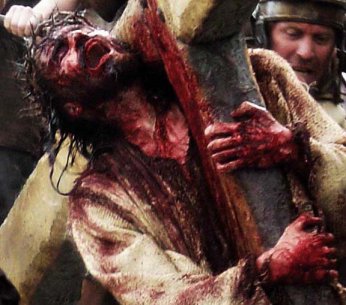 The Jews were not expecting a suffering kingly Messiah
The Jews were not expecting a suffering kingly Messiah
Peter's Witness
Paul wasn't the only writer to point New Testament readers back to the Old Testament. Peter did too while preaching to the Jews in Jerusalem. He sought to convince them that the Old Testament intimated the coming Messiah would die and would not be left in the grave (Ac.2:22-47). His argument was subtle - characteristic of the way Old Testament Jews found allusions to the coming Messiah in their Scriptures. Yet, in combination with Peter's other comments about how Yah'shua (Jesus) fulfilled the Old Testament predictions of a suffering Messiah, it must have impressed his Jewish listeners. The second chapter of Acts tells us that more than 3,000 converts responded to his message and converted to Yah'shua (Jesus). They accepted the same argument Paul used in 1 Corinthians 15, that Messiah lived, died, and rose from the grave in a manner that fit what the Old Testament nevi'im (prophets) said would happen.
He Died in Full Public View
That brings us to a second line of evidence suggested in Paul's summary, namely evidence that Messiah died. Paul said: "Messiah died for our sins...(and) was buried" (1 Cor.15:3-4). That is important! Messiah was not buried alive. The Gospel accounts make that clear. His death was not an accident that left Him lying for a while along some deserted roadway. He did not endure His agony away from the crowds; rather, His death was the centre of the city's attention. Furthermore, at the centre of the city's attention, the scene was one of deliberate execution. This was a public execution by soldiers whose lives depended upon their ability to carry out the sentence of death. There were no heroic efforts to save His life. No ambulance was called to rush His body to a trauma centre where it could be placed on life-support systems until vital signs returned.
 He died in full public view
He died in full public view
Three Days Dead in a Tomb
The evidence says that Messiah actually died and spent three calendar days in a tomb. His death was confirmed by His executioners, who didn't take any chances but plunged a spear into His side. Then He was carried away, wrapped according to the embalming custom of the day, and placed in a tomb sealed by a heavy rock. The emperor's seal was placed on the tomb to warn grave robbers, and a guard was posted to make sure that no none brash enough to risk his life to steal a dead body would be able to do it. All of this is a reminder to us that what happened three days later was not just a physical resuscitation. Yah'shua (Jesus) didn't rally from a non-fatal injury. He was not buried alive. He had actually died.
After-Death Appearances
This brings us to a third line of evidence - the evidence of after-death appearances. In 1 Corinthians 15 Paul gave his greatest emphasis to the evidence that Messiah was seen alive after His death. Here the apostle's arguments remind us that after Messiah's grave was found to be empty, and after His talmidim (disciples) rushed to confirm that the body was missing, He began appearing to both individuals and groups over a period of forty days. It wasn't just a case of a high-strung person here and there who heard voices in the night, or who woke out of sleep to sense a mysterious presence in the room. It wasn't a rumour or a glimpse of a look-alike in a crowd, or a ghostlike appearance in the trees. The reports were not based on warm feelings, or even cold-blooded feelings, but upon actual physical appearances designed to eliminate the possibility of hysteria or hallucinations. To Thomas, He showed His scarred hands and feet. Thomas responded with worship as he exclaimed: "My Master (Lord) and My Elohim (God)!" (Jn.20:24-29), a passage which, incidentally, proves His Deity.
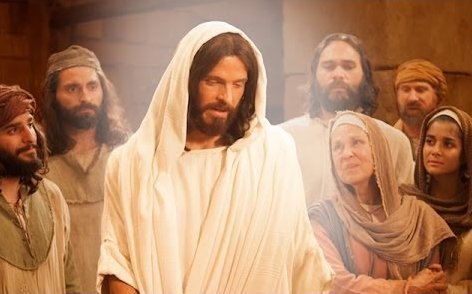 He appeared out of nowhere in their gathering
He appeared out of nowhere in their gathering
First-Hand Evidence from Live Witnesses
It is also important to note Paul's claim that a group of 500 people saw Yah'shua (Jesus) at the same time, and that most were still living at the time he wrote the letter. The implication is that the witnesses were available for questioning. An investigation was possible. Hundreds of eyewitnesses could have been interviewed.
Paul's Emphasis to the Corinthians
First-person evidence is what Paul emphasises most in his letter to Corinth. He reviewed for his readers the fact that Yah'shua (Jesus) had appeared to Peter, and then to the twelve apostles, that He was seen by more than 500 people at once, that He was seen by James, then by all the apostles (including an initially sceptical Thomas), and finally by Paul Himself.
Can you imagine what that would have sounded like to the Corinthians? These were familiar names - names similar to the ones that regularly appear in our own newspapers and on our TV and computer screens today. They were well-known persons who were able to give first-hand witness that Israel had more than a missing body and an empty grave to deal with. They were able to confirm that the Messiah had risen physically from the dead. His own scarred body was physical proof of His resurrection.
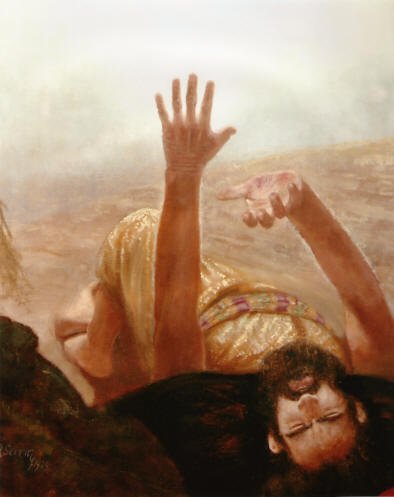 Paul meets the resurrected Messiah
Paul meets the resurrected Messiah
The Evidence of Changed Lives
Finally, there is one more evidence of the resurrection, and this is what I most want to talk about today because we can be witnesses of the same thing - it is the evidence of a changed life. Paul's life was changed. After coming face-to-face with the resurrected Messiah, he had become an entirely different person. What we have to realise is that Paul's changed life was evidence that he really believed his own story, and that his story didn't rest on mere philosophy or spiritual insight. His changed life was in response to the realisation that Yah'shua the Messiah (Jesus Christ) really was the Son of Elohim (God), who died voluntarily for our sins on a cross and then rose from the dead to prove He was the promised Messiah. Yah'shua's (Jesus') resurrection had truly set Paul free.
Reviewing the Evidence So Far
We have looked at the kinds of evidence the faith of Yah'shua (Jesus) rests upon. They are not exhaustive by any means, but they are adequate. They are evidence that can lead the honest enquirer to an intelligent faith. They are much more than the striking phenomenon of the Shroud of Turin. Remember:
- 1. The evidence of the Tanakh (Old Testament) Scriptures;
- 2. The evidence that Yah'shua (Jesus) died;
- 3. The evidence of the empty tomb and the many appearances of Messiah; and
- 4. The changed lives of men like the apostle Paul, who did a complete turn-around after he was confronted by the resurrected Messiah.
PART 2
Dead Issues, Closed Issues
Lost causes are real. Look at the record. The sports commentator said the game was unwinnable. The insurance salesman said the car was unrepairable. The doctor said the patient was incurable. The marriage councellor said the relationship was irreconcilable. The educator said the student was unteachable (and I've personally come across a lot of these in my profession!). In each case the outcome seemed predictable. Each is an example of a dead issue. Each case seemed closed.
Solving a Political Nightmare
A similar situation existed in the early days of the first century. A 33 year-old leader was dead. After a public execution with plenty of witnesses, the body of a young Judean hope had been disposed of by the authorities according to the burial customs of the day. All that remained was to make sure that grave robbers didn't disturb the final resting place of this 'political nightmare'. By posting a guard at the burial site, officials seemed to have sealed the fate of the Christian/Messianic cause. Dead messiah's don't leave much of an inheritance.
The Unexpected Happened
But then the unexpected happened! Three days later, unexplainable events began to occur. Rumours began to fly that the grave was empty. A growing number of persons claimed to have seen the Man who had been executed between two thieves. This 'dead issue' was not only alive, but He had become an irrepressible source of everlasting life. And He became the leader of what turned out to be an irrepressible cause.
 Rumours began spreading that the tomb was empty
Rumours began spreading that the tomb was empty
Resurrection Power is Conditionally Available to Everyone
Let us now see how the power of this resurrection represents hope for other lost causes and dead issues. Our subject will be the apostle Paul, who in writing about the resurrected Messiah also wrote a lot about his own 'resurrection' from spiritual death. I hope to be able to share with you my testimony that the power that raised Yah'shua (Jesus) from the dead is life-changing, energising, and available to anyone who is willing to accept it on the terms it is given and are willing to be changed by it.
Paul's Testimony
Paul wrote:
"The He apeared to James, and afterwards to all the apostles. last of all He appeared also to me - even though I am like someone whose birth was at the wrong time. For I am the least of the apostles - I do not even deserve to be called an apostle, because I persecuted Elohim's (God's) Messianic Community (Church). But by Elohim's (God's) grace I am what I am, and the grace that He gave me was not without effect. On the contrary, I have worked harder than any of the other apostles, although it was not really my own doing, but Elohim's (God's) grace (undeserved loving-kindness) working with me" (1 Cor.15:7-10, TEV).
The Last Person You Would Expect to Convert
The first thing that is apparent from this passage is that resurrection power is life-changing. The power of the resurrection to change lives is seen in its ability to change the most unlikely persons. I don't know whether it would be appropriate to liken Paul to someone on the level of a present-day pornographer or mass-murderer. He was, after all, a very religious person. But we still have to realise that as far as Christians/Messianics of his day were concerned, He must have seemed like the last person in the world you would expect to become a believer.
His Terrible Record
Look at His record. While the first apostles like Peter, James and John were doing everything they could to tell the world that the Messiah Yah'shua had risen from the dead, Paul was doing everything he could to shut them up. He apparently could never forget that he had made little children and women cry, and that he had made grown men groan as a result of being torn from the families they loved and felt responsible for.
Were We Any Worse?
With that background in mind, look around you. Paul's experience should be a reminder that no one is too bad to be changed by Yahweh. No one is too arrogant, too lustful, too alcoholic, too proud, or too spiritually antagonistic to be raised from spiritual death and set free. Look at the people you are familiar with. Are they worse than Paul? Are they less likely than he was to accept the Messiah? To be changed from a chief persecutor to chief promoter of the Master Yah'shua the Messiah (Lord Jesus Christ)?
Life-Changing and Energising
And this brings us to something else that our text tells us about the power of the resurrection of the Messiah. According to what Paul wrote, the power of the resurrection is not only life-changing, it is also energising. Listen carefully to what Paul wrote in verse 10:
"But by Elohim's (God's) grace I am what I am, and the grace that He gave me was not without effect. On the contrary, I have worked harder than any of the other apostles, although it was not really my own doing, but Elohim's (God's) grace working with me" (1 Cor.15:10, TEV).
Yahweh Makes the Difference
It is clear that the apostle Paul was talking about more than just a big idea that was motivating him to be a new person. It is also clear that as far as he was concerned, he had not changed himself from being chief persecutor to becoming chief promoter of the faith of the first believers. Neither had he merely put out more effort than the other apostles before him. On the contrary, he declared that it was Yahweh at work in him that made the difference.
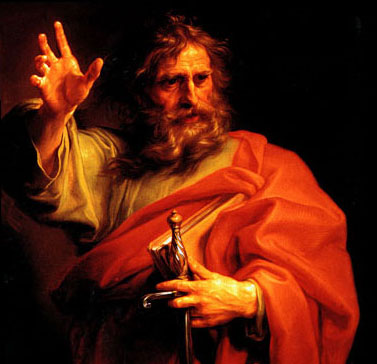 Paul was a supernaturally changed man
Paul was a supernaturally changed man
Taken Over
Does that mean that Paul was completely taken over by this power? No. No more than you are completely taken over by the petrol/gas in your car's fuel tank. Just because the explosive energy of petrol powers car and driver down the road doesn't mean that the petrol has made the driver any less responsible as a person.
Voluntary Submission
Something Paul said in 1 Corinthians 14 helps me see the balance that is needed. While the apostle was talking about a right approach to being under the influence of the Ruach haQodesh (Holy Spirit), he pointed out that "the spirit of the nevi'im (prophets) is subject to (under the control of) the nevi'im (prophets)" (1 Cor.14:32). He said, in effect, a person walking with Yahweh's Ruach (Spirit) does not forfeit self-control. On the contrary, our voluntary submission to the Ruach (Spirit) is what gives Yahweh His real control over our bodies. And it is the Ruach (Spirit) who works in us to make it possible for us to work hard in doing what He wants done.
Spiritually Enabled to Do the Father's Will
This last point - about the work that is energised by the resurrected Messiah - is important. In fact, it is a necessary factor in understanding Paul's experience of Yahweh's strength. He wasn't experiencing the power of Yah'shua's (Jesus') resurrection merely to make a name for himself. The power was not intended to enable him to make a lot of money. On the contrary, he experienced this spiritual enabling in the course of doing what Yahweh wanted him to do.
Available Through Grace to All on Yahweh's Terms
That brings me to a final point about this source of spiritual strength that changed Paul. Resurrection is available to all who are willing to be humbled by the terms on which it is offered. Thus resurrection power becomes available to us too. Note that this power was called "grace" in 1 Corinithians 15:10, the verse we have been discussing. In Paul's mind "grace" was a word that could be used to describe the work and power of the Ruach haQodesh (Holy Spirit) in a person's life.
Undeserved Help
But why "grace"? Why not refer to the power of the Ruach haQodesh (Holy Spirit), or Person of Elohim (God) directly? I think the meaning of the word will help us see why. In a general sense, the word "grace" means 'an undeserved expression of loving-kindness'. Grace, therefore, is any expression of the kindness of Yahweh-Elohim that is given to those who do not deserve it. That involves not only the initial grace of salvation but every other expression of the undeserved help we receive from the Master.
The Only Qualification is Undeservedness
This is what makes the kind of life-changing, energising power that Paul experienced available to us as well. The fact that we don't deserve it is what qualifies us for it. It is on this unmerited basis that all of us can come to the Master to receive the help He loves to give - the forgiving, energising help no one has any inherent right to claim. Paul had this all-encompassing, undeserved kindness in mind when he wrote verse 10 of 1 Corinthians 15.
Come to the Resurrected Messiah
So, do we want to become active, obedient children of Elohim (God) and faithful servants? Do we also want to live and work and love in behalf of the Master? Then what are we waiting for? If we are truly waiting, saying that we don't qualify for forgiveness, or that we can't afford the life-changing power that is necessary, is no excuse. Saying that we haven't earned it and don't deserve it is no excuse either. In fact, that's the whole point! These are exactly the terms of undeserved loving-kindness that the Master wants us to take advantage of. On this basis we are invited to come to the resurrected Messiah and find the strength and favour He loves to give.
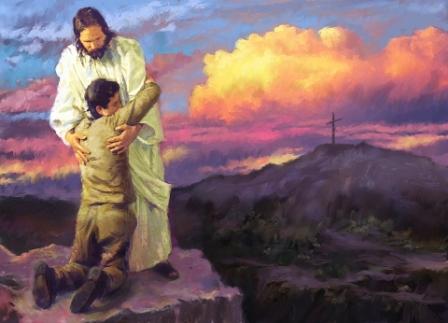
Received Through Active Trusting
But we need to see that we have to receive this grace in the same way and from the same source as Paul. He didn't find it by going through a physical ritual. His father and mother didn't get it for him. His pastor, bishop or messianic rabbi didn't get it for him. He didn't even get it by reading his Scriptures daily or taking the Master's (Lord's) Supper every week or once a month. A study of his experience, as described by his own letters, shows that he found it through personal emunah (faith) or trusting in Yah'shua (Jesus). Yes, it was faith - actively trusting - in Yah'shua (Jesus) that enabled him to say that it was by the grace of Elohim (God) that he was what he was, that it was the grace of Elohim (God) that was working so actively in him.
A Gift to the Unworthy
Having said this do not think that I am saying that we have no need of physical rituals (like baptism), Scripture study, and so on. All of these are necessary for our spiritual growth and for passage into Messiah's Kingdom. Ultimate or final salvation is the product of an intimate interrelationship of grace and works [3]. What I am saying is the resurrection power of the sort Paul is describing cannot be purchased by some human works but is the gift of El Elyon, the Most High, to unworthy man.
Life-Changing, Energising & Available
Let me encourage you to let the Master make this same grace real to you today. We all need it. As you do, you will find that the power which raised Yah'shua (Jesus) from the dead really is:
- 1. Life-changing;
- 2. An energising power; and
- 3. An available power.
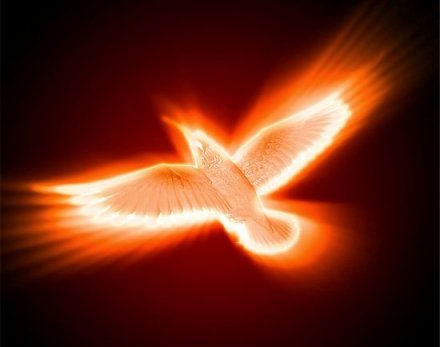
Neither a Dead Issue Nor a Hopeless Cause
You will find that doing the will of Yahweh including obeying the mitzvot/commandments, Scripture study, and observing the divine moedim or appointments of Yahweh [4], loving as He wants you to love, and becoming a spiritually strong person is neither a dead issue nor a hopeless cause. It is possible to the degree that you are open to the power of Yahweh that raised Yah'shua (Jesus) from the dead.
Personal Blockages to Our Receiving Grace
Perhaps you still don't believe it is enough to change you? Your past is too immoral? Your present too lost in alcohol, or lust, or dishonesty, or laziness? You're too proud, you take too many pills, or you're afraid to take a stand for Yah'shua (Jesus)? I don't know what each of your personal problems are but my own experience tells me that there is one block or another to people receiving an outpouring of Grace from Yahweh. Our problems may even seem innocuous to us, but they may be just big enough to prevent us from experiencing the full power and freedom that Yah'shua (Jesus) so desperately wants us to have.
Acknowledging Sinful Behaviour
We must each, individually, receive Yah'shua (Jesus) into our lives as our personal Saviour and so begin to receive the power of resurrection. We must all be prepared to acknowledge that we are sinners. The Scriptures tell us: "For all have sinned and come short of the glory of Elohim (God)" (Rom.3:23, NIV). If we are honest, we will admit our sin and guilt - and our helplessness to do anything to improve our situation with Yahweh in our own strength.
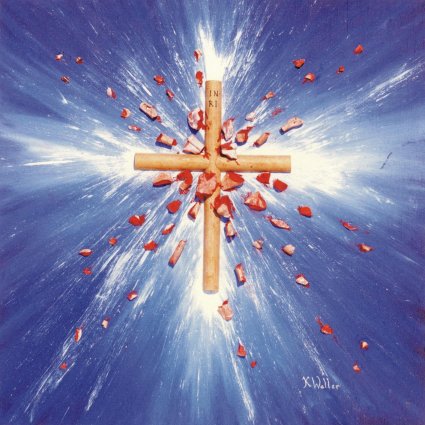 Our sins are blotted out upon repentance
Our sins are blotted out upon repentance
Our Best Cannot Remove Sin's Debt
What can we do? We can begin by admitting that we are sinners. Then we must face squarely that a mortal man cannot please a qadosh (holy, set-apart) Elohim (God). Our best will never be good enough to remove the debt of our sin. We need a righteousness that comes outside ourselves - that comes from Elohim (God) Himself.
The Necessary Confession of the Soul
We must then acknowledge that Yah'shua's (Jesus') life, death, and resurrection was on our behalf. He left heaven's glory and became man for us. He paid the penalty of sin for you. He died on the cross for you. And He arose from the grave to demonstrate that He had broken sin and death's power for you.
The Need for Baptism & Ongoing Grace
Finally, you must be obedient to His mitzvot (commandments) in the Torah. Once you have acknowledged your eternal indebtedness to Yah'shua (Jesus) and turned away from your sins, claiming Him as your personal Saviour and claiming the promises He makes to you through the power of His resurrection, you must be baptised by immersion, in the presence of two or three witnesses (to confirm you were obedient and hold you accountable) as a token of the washing away of your sins and the invisible baptism or infilling of the Ruach haQodesh (Holy Spirit). But even if you have already complied with the divine requirement for baptisms (Heb.6:2) and are baptised into Messiah you still need His ongoing grace.
PART 3
Make Peace With Elohim
If you have not made shalom (peace) with Elohim then I invite you to do so without delay. It will change your life. Nothing is more important and all else that is good and necessary for a complete life and for the assurance of ones eternal future flows from this decision.
The Patterns of the Spring Festivals
The Passover Season represented by the three moedim, appointments or feasts ordained by Yahweh is a simple picture rooted in time of how a person gets saved and stays saved:
- 1. Pesach or the Passover Meal - this teaches us that Yah'shua (Jesus) is the sacrificial Lamb who died for our sins. On Aviv 14 at the exact time the paschal lamb was to be slain, Yah'shua (Jesus) was slain. Yah'shua (Jesus) also had a four-day examination period before the religious leaders and was found without blemish. Therefore we have 4 Days of Examination or Study before Pesach in which we contemplate Yahweh's and Yah'shua's (Jesus') perfection and purity, reminding ourselves that we are called to be without blemish too. Pesach represents, to use another analogy, spiritual conception in Messiah;
- 2. Chag haMatzah or the Feast of Unleavened Bread - Yah'shua (Jesus) described Himself as the "Bread of Life" without sin. He was born in Beit Lechem (Bethlehem), meaning 'house of bread' in Hebrew. Just as matzah or unleavened bread is striped and pierced, so was the Messiah. This Feast falls on the day after Yah'shua (Jesus) was buried. Chag haMatzah represents the old (Adamic, carnal) nature being completely purged (sanctification) through repentance, forgiveness through the blood of Messiah, and subsequent yielding to Yahweh's divine tavnith (pattern) and way of life through obedience to the mitzvot (commandments); and
- 3. Yom haBikkurim or the Day of Firstfruits - Yah'shua (Jesus) is the Bikkurim or Firstfruits (1 Cor. 15:20-23). Yah'shua's (Jesus') resurrection marked the beginning of the harvest of souls. John 12:23-24,32 shows Yah'shua (Jesus) was likened to a grain of wheat falling to the ground and dying to produce a great harvest. Yah'shua (Jesus) arose (today) on the Day of Firstfruits.
The Summer Festival of Shavu'ot
This is what the Passover Season is all about - acknowledging the sole-sufficiency of Yah'shua the Messiah, Jesus Christ, the Passover Lamb for salvation that is symbolised by Pesach, choosing to get sin out of your life through daily repentance that is symbolised by Chag haMatzah, receiving the resurrection power of Christ symbolised by Yom haBikkurim, and maintaining that free gift of salvation for the rest of your life through daily repentance and the forsaking of sin represented by the remaining days of Chag haMatzah, the 7 days representing your whole cycle of your life. These are the initial and ongoing personal decisions you must make. But that is not the end of the matter for there is another moed or appointment we have with Yahweh in the summer that symbolically describes the fourth principle:
- Shavu'ot or Weeks or Ekatost more commonly known as 'Pentecost' - 7 sabbaths and 50 days after Yah'shua arose, which we begin counting today (known as 'counting the Omer'), a group of Messianic Judahites received the Ruach haQodesh (Holy Spirit). Yah'shua (Jesus) said to His talmidim (disciples), "Unless I go, the Ruach haQodesh (Holy Spirit) will not come. But when I go (Firstfruits - His resurrection) I will send the Ruach haQodesh (Holy Spirit) to you." Thus Yahweh began the process of writing the Law (Torah) on the hearts of the believers as foretold by the navi (prophet) Jeremiah (Jer.31:33). Three thousand souls were initially saved and millions have been saved since. Shavu'ot represents (on one level) the subsequent resurrection of believers, something that happens communally, en masse, when He returns the second time.
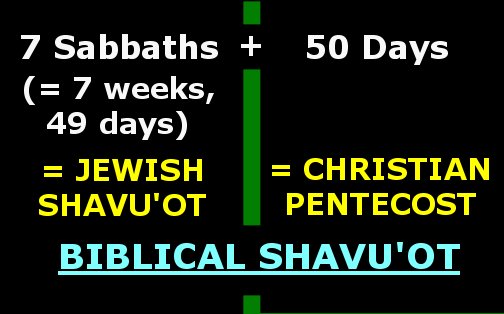 The Omer count begins at Yom haBikkurim
The Omer count begins at Yom haBikkurim
Way of the Messiah
Now these are simple summaries of key historical events and of important spiritual principles. The festivals are a repository of sacred instruction that is very deep consisting of many levels that we come to understand more fully as we grow in our relationship with Christ. They ensure that we mentally stick to the true pattern of Yahweh's revelation. The remaining autumn festivals, which have not yet been fulfilled like the first four in the spring and summer have been, are all about the Second Coming, the first resurrection of the Bride at the beginning of the Millennium, the preliminary Judgment at the start of the Millennium and the Final Judgment at the end of it, the Marriage Feast of the Lamb at the beginningg of it and the Cosmic Jubilee at the end of it...and much more! But that is enough for you to digest in one day as Yahweh's Great and Marvelous Plan of Salvation reveals itself in all its glory to His astonished sons and daughters as they seek Him earnestly.
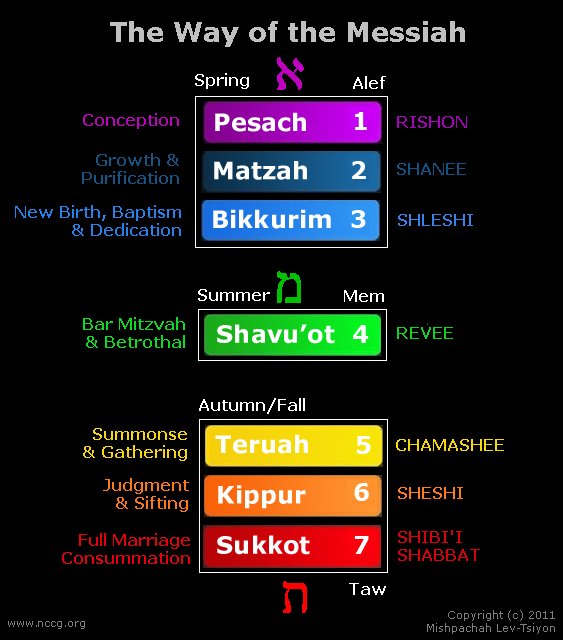 The divine tavnith or pattern as revealed in the festivals
The divine tavnith or pattern as revealed in the festivals
The Way of Holiness
These Spring Festivals are all about the first principles of getting delivered from sin and enting into a personal relationship with Elohim (God). This is what one might call 'basic holiness Evangelical Christianity' - and I emphasise the word 'holiness' here because there are those Ultra-Evangelicals I spoke of yesterday who don't believe that holiness is something that must be pursued but is somehow 'automatic' (they confuse the legal/jurisdictional with the actual process of sanctification) and see no need for commandment-keeping which is essentially what Chag haMatzah is all about, it's goal being applied holiness. There are many kinds of Christian who call themselves 'Holiness Evangelicals' - different because they make different selections of commandments to obey. As messianics we are called to obey all the mitzvot or commandments that have not been superceeded in the New Covenant because all are necessary for a complete sanctification, and a complete sanctification is a fruit of that way of living and being that is exemplified by the the Holy [Melchizedek] Order, the Pure Way pursued by the qodeshim (saints, holy or set-apart ones) who are the Bridal Citizens of the New Jerusalem, the Garden-City of Eden-Astara.
Learning to Surrender
Today we celebrate the Resurrection which was witnessed by many, as we saw, whose power is real and available to all who will exercise faith and commit to a life of holiness and obedience to Elohim (God), How much or how little we receive is up to us, a matter of how much of ourselves we yield in surrender to Him. Ideally we should make a complete surrender from Day #1; in reality, most surrender piecemeal for a variety of reasons. The sooner we surrender, though, the better, for the more quickly we shall be filled with the Ruach (Spirit)!
The Other Days of Chag haMatzah
Ahead of us lie five more days of observing Chag haMatzah and though there are no formally commanded assemblies during these days except on the seventh and last day, which is a High Sabbath (in addition to the four regular monthly ones) each of these seven days is blessed by a further filling of the Ruach (Spirit) until the fullness has arrived on the seventh if we are willing to receive it. Most, alas, pay little attention to four of these five final days which is a pity; and indeed when I was in better health and younger we would have voluntary assemblies on all of them for instruction on what each of these days symbolise for they most assuredly mean something. Perhaps in the future it will be posisble to do this again as fresh blood enters this work to help carry the burden of ministry!
The Seven Ruachot Before the Throne
For, you see, as on the seven days of Sukkot, the last of the autumn festivals, so now on each of the seven days of Chag haMatzah, of which this is the second, being simultaneously Yom haBukkurim and uniquely a double moed - one of the Seven Ruachot (Spirits) of Elohim (God) manifests and is discernable to those who walk close with the Father, for these are His Ruachot (Spirits)...the Seven Ruachot (Spirits) "before His throne" (Rev.1:4) who are "sent out into all the earth" (Rev.5:6) about whom practically nothing is known by Christians and Messianics alike (also see Rev.3:1 & 4:5).
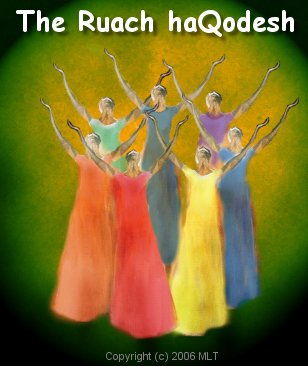
Meeting the Seven Ruachot at Yom haBikkurim
These are the "Seven Pillars" of "Wisdom" (Prov.9:1) and they are Seven Persons, the Seven Mothers, collectively our Heavenly Mother (for Yahweh is personal and Elohim/God is a Divine Family), the first three being represented by 'Eden' and the Garden, and the last four by 'Astara' and the City, the Personal and the Collective, respectively. The first Three can only be 'seen', 'met' and 'understood' personally whereas the remaining Four can only be experienced collectively as the Bridal Community of Messianic Israel. In the same way that the resurrected Christ did not appear to the ungoldly multitude who slew Him but privately to 500 select souls (1 Cor.15:6); in the same way that the transfigured Messiah along with Moses and Elijah did not appear to all the apostles but only to three (Peter, James and John - Mt.17; Mk.9; Lk.9); in the same way only a few like Enoch, Abraham and Moses communed face-to-face with Yahweh - so the Father only reveals part of the Elohimhead (Godhead) to those who are partially committed and surrendered to Him, reserving the remainder for those who are 100 per cent committed and surrendered to Him, who obey Him in all things. For such disclosure is a sacred trust given only to a few...to the 144,000 firstborn souls, the overcomers, those totally yielded to Elohim (God).

Conclusion
He does not act indiscriminately; He does not share His deepest heart or the very sacred with the profane. He wishes to share all with the end-time Remnant but He is waiting for its individual members to forsake all sin, lies and false doctrine and to trust Him completely in all things. And that is what we here aspire to do. I hope to talk more about this on the seventh and last day of Chag haMatzah so until then, may Yahweh cause you to think deeply on these things in prayer as you examine yourselves and your motives and consider what it is you really want. He wants to talk to you, and He wants to commune to you more intimately, but there are conditions, and those conditions are holiness. So I encourage you to make yourselves available to Him, especially now! In Yah'shua's (Jesus') Name. Amen.
Continued in Part 5
Endnotes
[1] To believers it is the burial cloth of Yah'shua the Messiah (Jesus Christ), miraculously marked with his image. But the Turin shroud was widely dismissed as a hoax in 1988 when scientific tests found it could not be more than 1,000 years old. Now one of the scientists who first studied 12 the foot-long sheet has spoken - from beyond the grave - of how he came to believe that it could be genuine. A video made shortly before Raymond Rogers died in 2005 has been discovered, in which the US chemist reveals his own tests show the relic to be much older - dating back to between 1,300 and 3,000 years ago. Dr Rogers said:
"I don't believe in miracles that defy the laws of nature. After the 1988 investigation I'd given up on the shroud. But now I am coming to the conclusion that it has a very good chance of being the piece of cloth that was used to bury the historic Jesus (Yah'shua)"
He was on the 1978 team that carried out the first in-depth scientific study of the shroud, which examined its underside for the first time in 400 years. After the 1988 carbon dating Dr.Rogers was adamant that the robe was nothing more than a medieval hoax. But speaking shortly before his death from cancer in 2005, Dr Rogers described how he compared the scrap tested in 1988 with other bits of the cloth. He found the 1988 sample was a patch of material woven in to repair the shroud after it was damaged by fire. Chemical tests showed that the postage stamp-sized sample contained cotton and had been dyed to match the main shroud, which is made of linen. The shroud has been damaged in several fires since it was first discovered in France in 1357 and it is thought to have been repaired by nuns. Dr Rogers said:
"The cotton fibres were fairly heavily coated with dye, suggesting they were changed to match the linen during a repair. I concluded that area of the shroud was manipulated by someone with great skill. It consisted of different materials than were used in the shroud itself, so the age we produced was inaccurate. We're darned sure that part of the cloth was not the original shroud of Turin cloth. The radiocarbon sample has completely different chemical properties from the main part of the shroud relic."
The 1988 study was coordinated by the British Museum and involved scientists from Oxford University, the US and Switzerland. The three institutions worked independently but each concluded the sheet dated to between 1260 and 1390.
Even the then cardinal of Turin conceded the relic was a hoax, as did Dr Rogers. On video he admitted it was 'embarrassing' to have come to agree with those who had vigorously defended its authenticity. Last week, evidence was published that the shroud had been secretly guarded by the Knights Templar following the sacking of Byzantium, now Istanbul, in 1204, until it resurfaced in Lirey, France, 150 years later. The cloth is kept in the Cathedral of Saint John the Baptist in Turin and will be next publicly displayed in 2010. (Fiona MacRae, Is the Turin Shroud genuine after all? From beyond the grave, a startling new claim)
[2] New Mysteries of the Shroud Unveiled - Body inside ancient linen 'levitated' while leaving image
[3] See the series of sermons, Amazing Graces and Free Gifts
[4] See Moedim of Yahweh
 For more on Chag haMatzah, click the link above
For more on Chag haMatzah, click the link above

 V460
V460
|


